

Well, given the shade, water and protection from stray camera-triggering summer sunbeams, I decided to set it again this year.
Seems the bobcats might have competition for those furred and feathered Great Basin snacks.

Perhaps Panamint Chipmunk? Has indistinct stripes and looks too chunky for Least
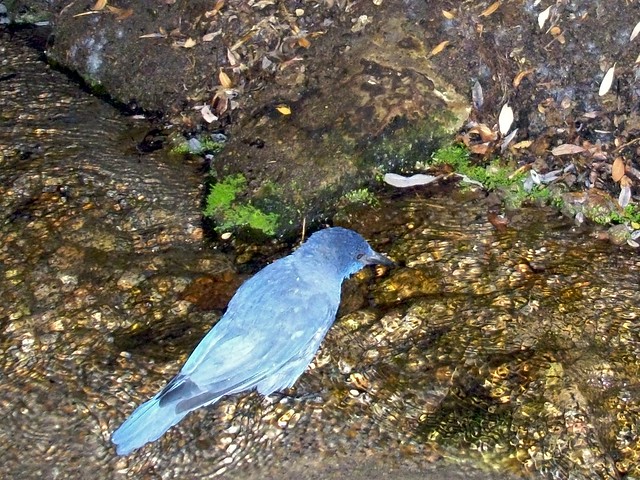
Pinyon Jay

Mountain Cottontail
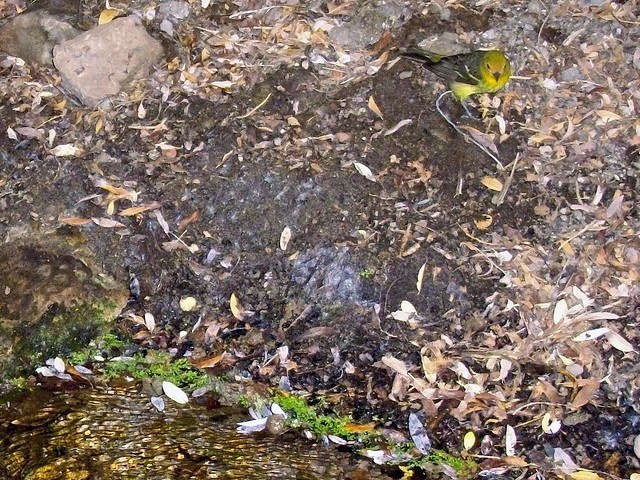
Western Tanager
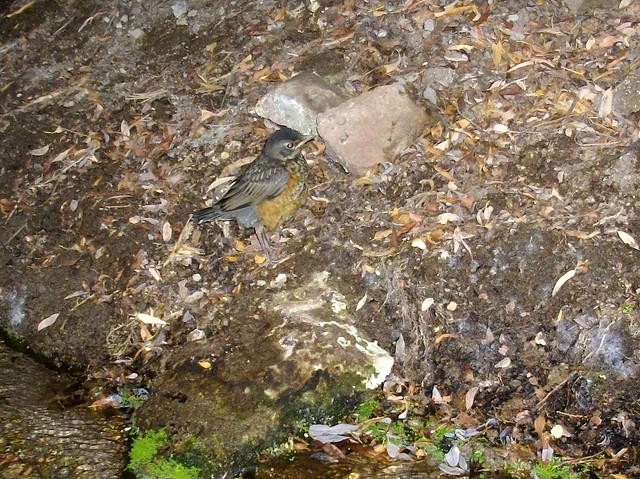
Fledgling American Robin?

Blurry, in-motion American Pipit?

Song Sparrow

Bob
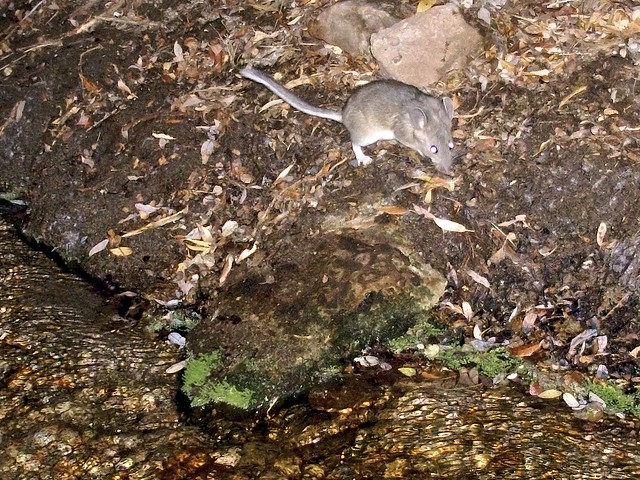
Bushy-tailed Woodrat
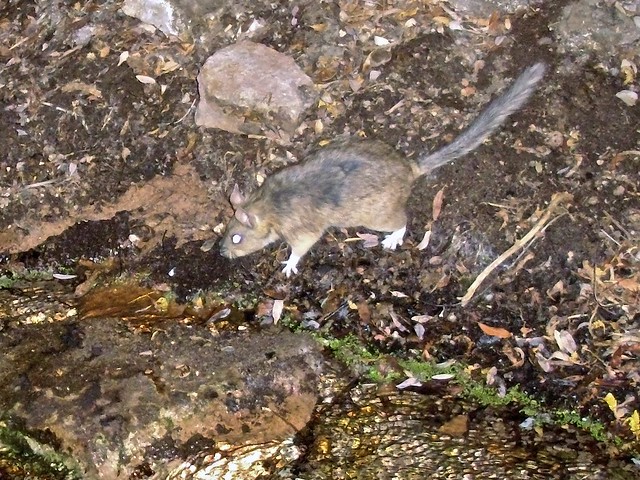
Second, larger Bushy-tailed Woodie
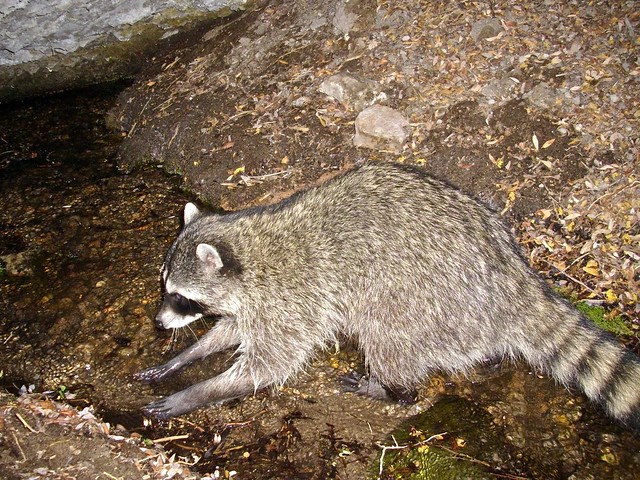
Raccoon dabbing the creek

Female Fence Lizard coming down to water
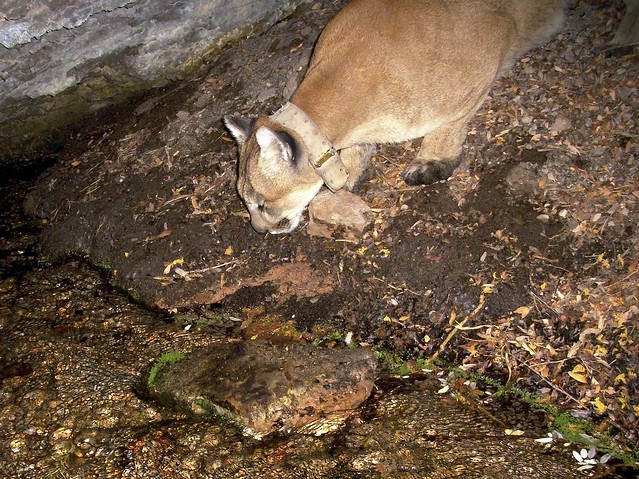
And a collared, slightly bigger kitty also passed through
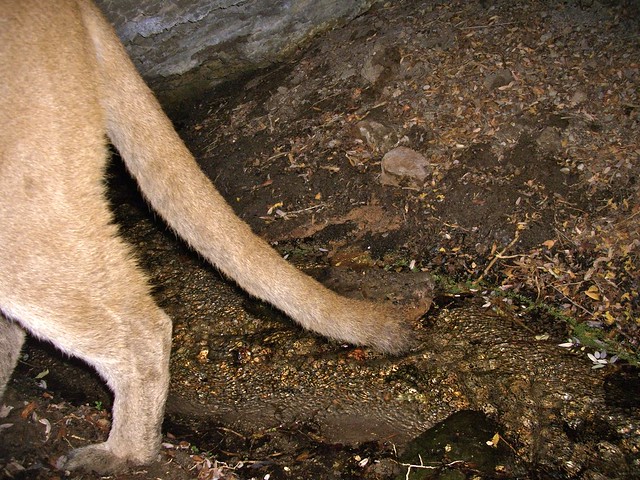
====
References:
- Nature of a Man (this blog) - Bob's Secret Grotto
- Nature of a Man (this blog) - Stray Cat Strut
- Nature of a Man (this blog) - posts from the Mono Basin
- California Department of Fish & Game - Bighorn Sheep Recovery Program
- Nature of a Man (this blog) - Smelly Cat
- Nature of a Man (this blog) - Always Put Collars on Your Kitties

Wow! That's a nice suite of wildlife...hard to do better than the Slightly Bigger Kitty. I love how the jay glows with the flash too.
ReplyDeleteFledgling robin is correct. The following bird is a juvenile robin; American Pipit has browner upperparts, streakier chest (as opposed to all spots) and lacks the orange on the side of the breast.
Gracias Seagullman - juvie robin was our backup but it looks soooo adult, and we so wanted something more interesting.
DeleteWhat a great spot. The bobcat is especially handsome. The bird photos reminded me: When in doubt, it's always a robin. ;)
ReplyDeleteNow that I've gotten up close to a dusky-footed woodrat and tail, it's fun to see such a good photo of the bushy-tailed woodrat. Someone did a good job of naming that species. Remind us how you can tell that is a female fence lizard. ah heck, I'll just look it up again on Cal Herps.
ReplyDeleteNot counting the blue belly on the underside (which is not visible in your photo), I would say that female fence lizards, at least those on Cal Herps, are better looking with those classic crescents and trim lines.
ReplyDeleteThe males in the area tend to almost black, and I have other photos with them coming to water too, but not as clear and crisp as the photo of the femme fencie.
DeleteHere is something that will catch your attention. An American Pipit is about the size of a Song Sparrow. Compare the two photos using the green moss for a size comparison. The (pipit) is much bigger in the photo. See how dark its tail is. I'm fairly certain that its a thrush. My first impression of the bird when I saw the photo was that I was looking at a bird I saw here in Alaska a few years ago, a Redwing. Did you get other photos of that bird? It is worth taking a very careful look at it.
ReplyDeleteNow that I got your hopes up. The bird is most likely just an imm. Robin, but older than the fledgeling in the earlier photo. Great post anyway.
ReplyDeleteNo worries John. The place is very birdy, over 150 species documented to date, including the Pipit, so it's not an area where you can easily leave any species out of the possibles. And that photo has the bird coming at the cam, which makes it hard to tell size.
DeleteHow does your camera capture the lizard? Motion only? Or is it kind of on a "guard duty"?
ReplyDeleteFencies can actually store up a bit of heat and be a few degrees warmer than their surrounds, but in this case it's mostly because the hot lizard came into the cool shade from the sunny slope above.
Delete